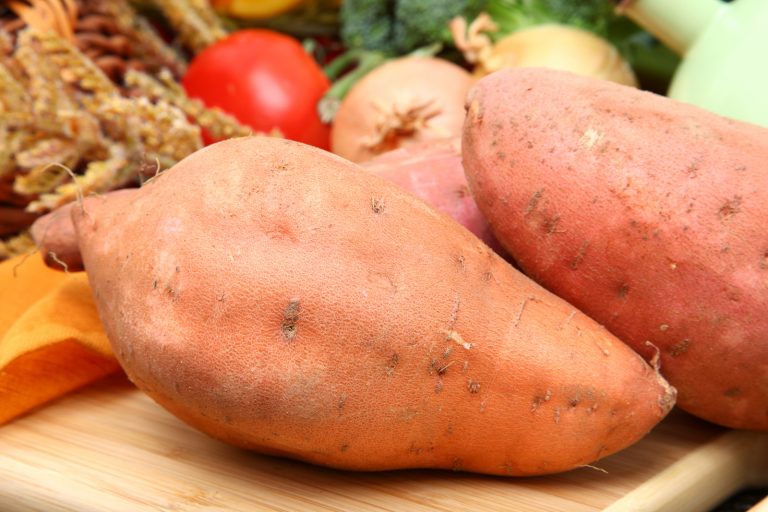The sweet potato is one of the most delicious roots, or tubers, available to American appetites. Shaped like an elongated potato, the sweet potato is at its best from December through March and can be found at local Arizona grocers, farmer’s markets, and growers like Crooked Sky Farms or the Sphinx Date Ranch, both located in Phoenix.

But do not confuse sweet potatoes with yams, advises Kelly M. Young, assistant horticulturalist at the University of Arizona’s Cooperative Extension in Maricopa County.
The difference isn’t really even a difference. As in the case of daffodils (all jonquils are daffodils but not all daffodils are jonquils), all yams are sweet potatoes, but not all sweet potatoes are yams.
Yams, strictly speaking, are monocots; sweet potatoes are dicots. Both are flowering plants, but monocots typically have three-petalled flowers, or multiples of three. Dicots have four or five. The Chinese yam, for example – the one most commonly grown in the United States – has a frond of white, three-petalled flowers growing on each side of a central stalk. The typical sweet potato generally has a five-segment flower (the petals are not distinct from one another) in white or pink with a purple center.
In fact, many Americans have never tasted a real yam, which has a brownish skin, white flesh, and high starch content (like a real potato), but very little beta-carotene. Beta-carotene is a plant pigment that “signals” vitamin A content and gives some sweet potatoes their golden-orange coloring.
Sweet potatoes also come in shades from white to purple, including brown and rust, and in many countries people also eat the leaves, which are fan-shaped and reportedly more nutritious than the root, or tuber. Check with your local Arizona grower, or through Fill Your Plate, to determine if these greens are available at a nearby market or produce stand.
The white yam arrived in America very early. The sweet potato came later. Shippers and sellers took to calling the sweet, yellow root “yam”, after the African name for it; nyami. In time, the US Department of Agriculture ruled that orange-fleshed sweet potatoes would always be called just that, to distinguish them from the white, purple, or rust-colored tubers.
Fortunately, American food shoppers are unlikely to encounter real yams, which are considered a delicacy and usually sold only in exclusive food stores. This is because yams have a very long growing season, which cannot be found even in the Sonoran Desert region of Arizona, California, and Mexico, where both desert and dry tropical climates prevail.
At their best from December to March in Arizona fields, you can also find recipes for sweet potatoes on Fill Your Plate, a food resource for Arizona shoppers. You can bake them or oven-fry them, and each recipe includes local farmers and vendors that supply the needed ingredients.
Don’t shy away from them just because they are sweet! These tubers have only 114 calories per cup, and 23 net grams of carbohydrates. Subtract from that the 377 percent of vitamin A adults and growing children require to maintain vision (especially night vision), produce red blood cells, and resist infectious diseases, and you have a powerhouse food with a pleasantly sweet taste.
For the elderly, the specific carotenoids in sweet potatoes – the xanthophylls lutein and zeaxanthin – offer an even more specific incentive; they can help prevent age-related macular degeneration, especially that associated with type 2 diabetes!
Related articles
- 7 Savory Ways to Use Sweet Potatoes (fillyourplate.org)
- Favorite Recipes from Fill Your Plate Moms: Sweet Potato-Zucchini Bread (fillyourplate.org)
- Zucchini Sweet Potato Frittata Will Make You Sing “Hakuna Matata!” (fillyourplate.org)

